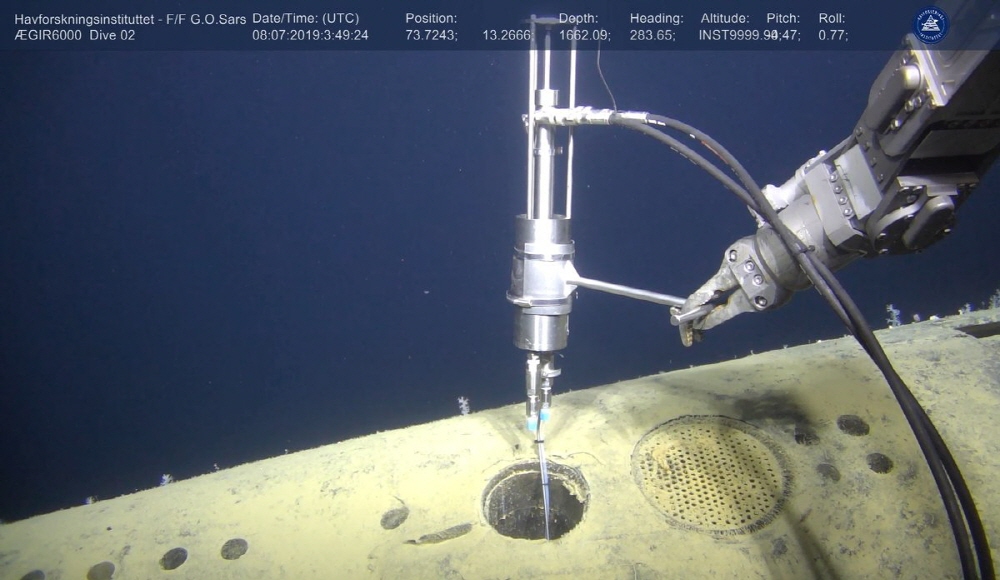
The K-278 Komsomolets is a former Soviet submarine that sank off the coast of Norway 30 years ago. On April 7, 1989, the K-278 Komsomolets, an offensive nuclear submarine, was submerged at a depth of 380m during its patrol activity on April 7, 1989. The captain tried to somehow raise the submarine to the sea level in a desperate situation, but the ship eventually sank after 5 hours. All 42 crew members were killed in this tragedy. As a result of this, the 120-meter-long nuclear submarine is still sinking at a depth of 1,700 m in Norway and 320 km north of the mainland of Norway.
According to the Norwegian Maritime Research Institute IMR, radiation is being leaked here. The amount of radioactive cesium released from the debris is enormous, 800,000 times higher than that of other seas. However, according to the joint research team of the IMR and the Norwegian Atomic Energy Agency DSA, there is no danger to humans or fish.
Remote observation of the K-278 Komsomolets has been conducted annually since the 1990s. In this year’s observations, the most thorough investigation was done. Scientists usually collect samples from the water near the submarine, but this time the survey ship sent a remote-controlled unmanned probe (Aegir 6000) to monitor the ship.
According to the research team, a few years ago, thanks to the unmanned probe, it was possible to know specifically where the submarine was sampled, and the entire submarine could be enlarged by section with a camera. According to this, in previous explorations conducted by the Russian team, radioactive leaks near the ventilation ducts were already recorded. The unmanned probe also detected high concentrations of radioactive cesium in the same location.

As stated earlier, the high concentration here is 800,000 times higher than that normally observed in Norwegian seas. Of course, not all near the ventilation ducts are at the same high concentration, and as a result of measuring a little away from the duct, there is no similar concentration.
The investigation reveals that the sunken submarine does not present danger to the Norwegian Sea and elsewhere. The level of radiation in Norwegian seas is 0.001 becquerels per liter. The area near the sinking point of the K-278 Komsomolets is about 1 liter and 100 becquerels. For reference, the food radiation allowance set by the Norwegian government immediately after the Chernobyl nuclear accident is 600 becquerels per kilogram.
Therefore, it is clear that the figures surveyed this time exceeded the sea standards, but they were not at the level of feeling anxiety. Moreover, it is said that the area where the submarine sank is quite deep and the radiation is rapidly fading. There are not many fish in this sea area, so there is less risk of contaminating Norwegian seafood. Of course, they also found water gushing out of the ducts and nearby outlets, and it is said that this is somehow related to radioactivity. This is worth further investigation. The probe also collected samples of small microbes attached to seawater and submarines. Analyzing this sample may lead to more than this preliminary achievement. Related information can be found here .


